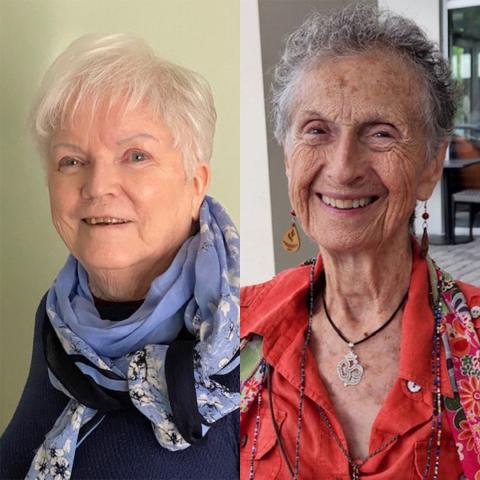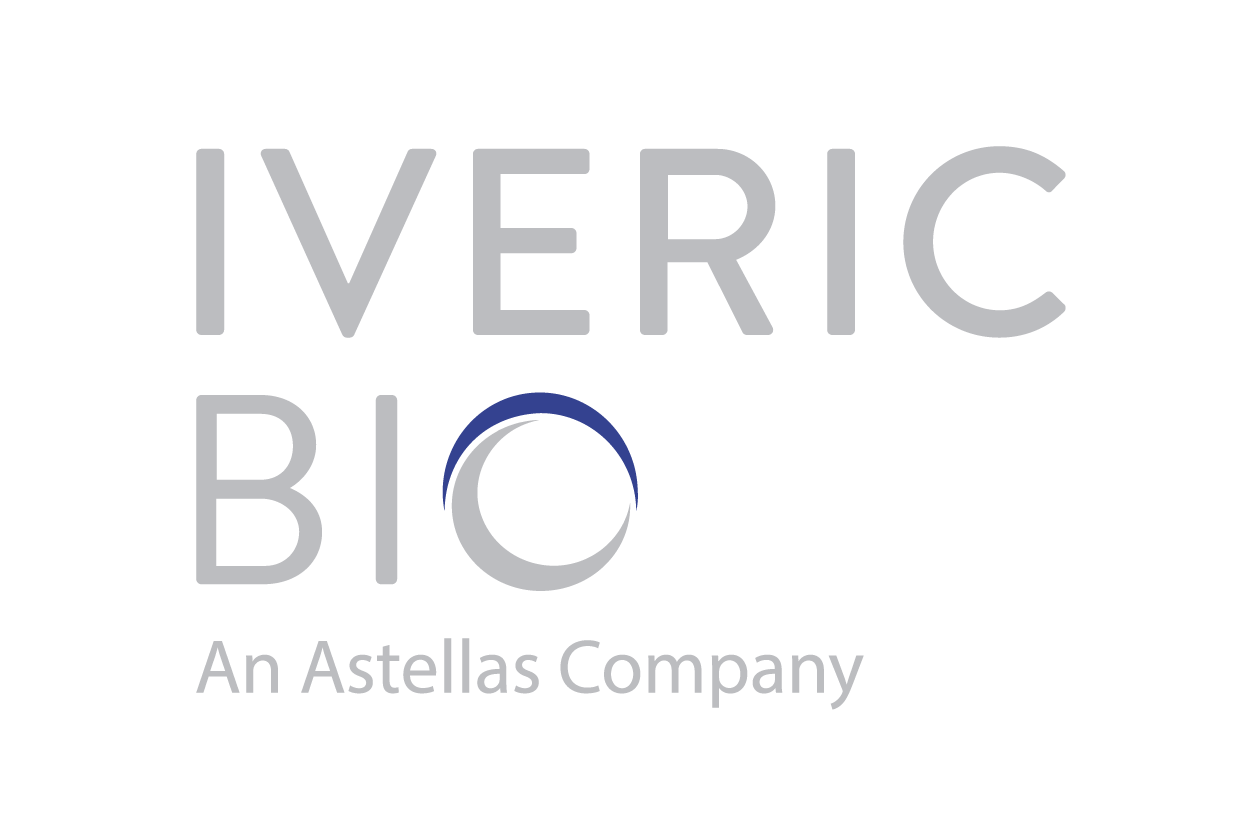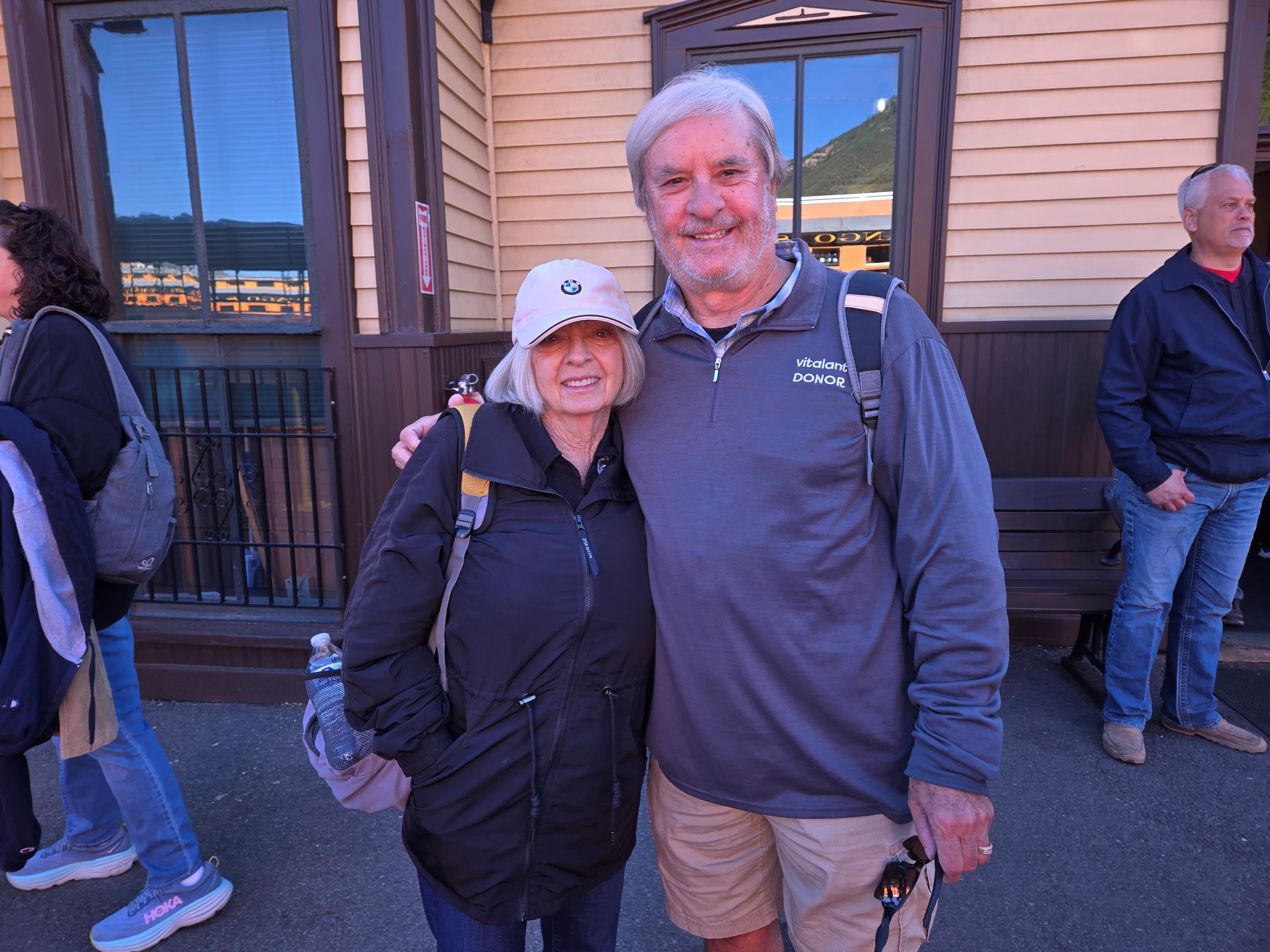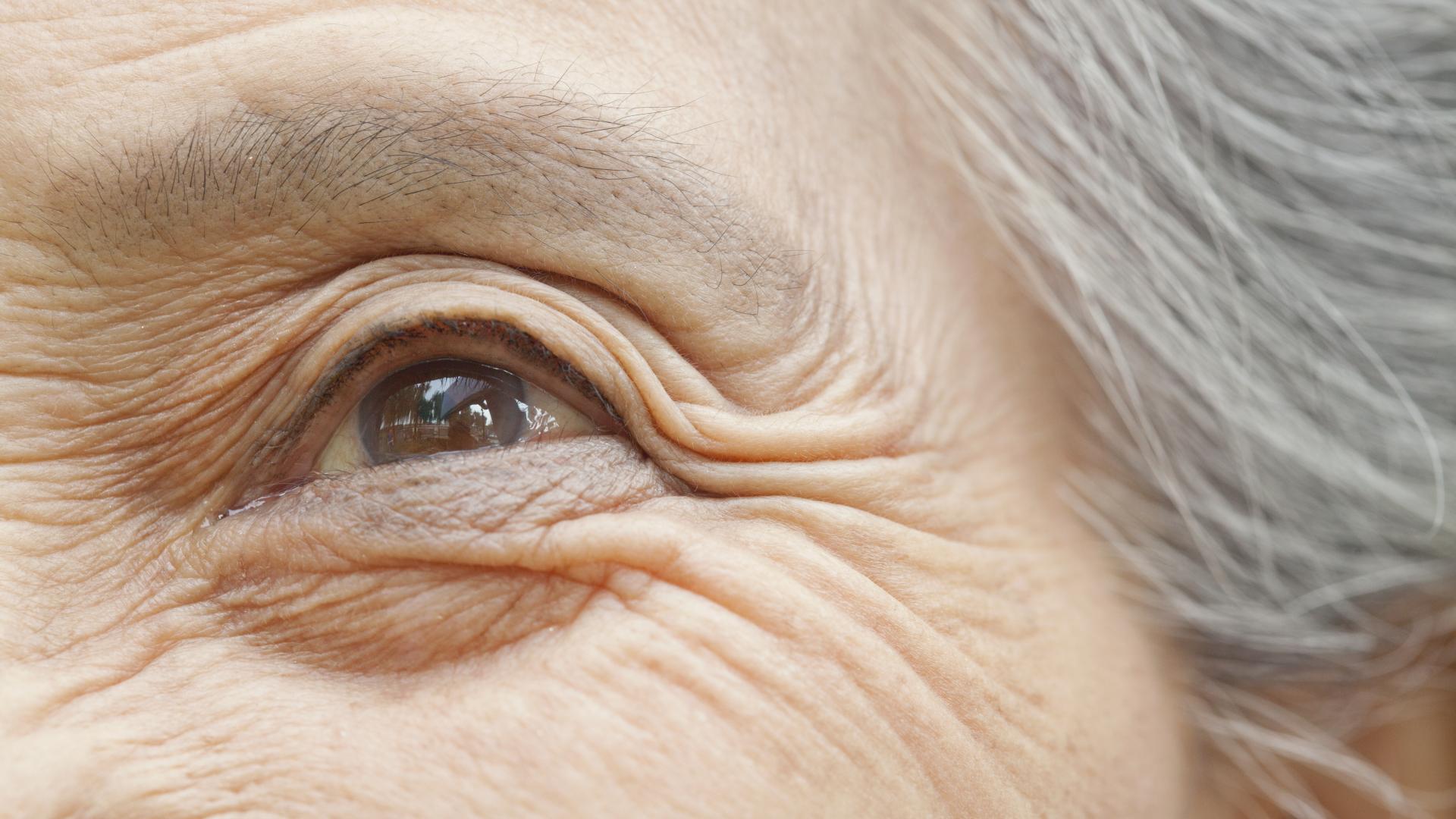Patient Voices: Living with AMD
Featuring
Maureen Foley and Sheila Klein
Chat and Community Circle Participants


Maureen Foley and Sheila Klein
Chat and Community Circle Participants

This Macular Chat episode featured guest speakers Maureen Foley and Sheila Klein, who are both currently living with age-related macular degeneration (AMD) and gave firsthand accounts of daily living with low vision. They also discussed the biggest challenges and the resources they find most helpful while living with AMD.
Maureen lives in Jamaica Plain, MA and is a retired COO in the pharmaceutical industry. She has a family history of wet AMD and started treatment in 2013.
Sheila lives in Fort Lauderdale, FL and is a retired school psychologist who specialized in working with the deaf community. She has a family history of macular degeneration and was diagnosed with dry AMD in 2013 after cataract surgery revealed the condition. She now has developed wet AMD and is receiving injections.
Download English Transcript PDF
MS. DIANA CAMPBELL: Hello, my name is Diana Campbell, and I’m pleased to be here with you today during Macular Degeneration Awareness Month. Today, I’m pleased to interview two women whose lives are both affected by macular degeneration. They will talk about how this disease has impacted their lives, as well as offer tips and advice to others. For those of you who are new to our Chat series, this Chat is brought to you today by BrightFocus Foundation. We fund some of the top scientists in the world who are working to find better treatments and ultimately cures for macular degeneration, glaucoma, and Alzheimer’s disease. And we do events like today’s Chat to get the latest news from science as quickly as possible to families that are impacted by these diseases. You can find much more information on our website, www.BrightFocus.org.
Now, I’m pleased to introduce today’s guests, Maureen and Sheila. I’ve gotten to know Maureen and Sheila very well through a program that we host called AMD Community Circle, which is a program that BrightFocus hosts on a monthly basis for people living with AMD to connect with one another and share tips and support. Maureen lives in Jamaica Plains, Massachusetts, and is a retired COO in the pharmaceutical industry. She has a family history of wet AMD and started treatment in 2013. Sheila lives in Fort Lauderdale, Florida, and is a retired school psychologist who specialized in working with the Deaf community. She has a family history of macular degeneration and was diagnosed with dry AMD in 2013, after cataract surgery revealed the condition. She has now developed wet AMD and is receiving injections. Maureen and Sheila, thank you so much for joining today.
MS. MAUREEN FOLEY: Glad to be here, Diana.
MS. SHEILA KLEIN: Happy to be here.
MS. DIANA CAMPBELL: So glad to have you both. Maureen, I’m going to start with you. I know you mentioned—and I know from knowing you well—that you have a family history of AMD before you were diagnosed yourself. Was this something that your family talked about and that you were looking out for? What was your familiarity with AMD before you got diagnosed?
MS. MAUREEN FOLEY: To be honest, Diana, I was totally unfamiliar with macular degeneration, other than the fact that I was aware that aunts and uncles had it. But it’s been 20 years of hearing of the vision problems with aunts and uncles, and they couldn’t see, but it didn’t mean anything to me until I was diagnosed in 2013, and it was like, “Oh, now I get it.” I had no idea how they were treated. I had no idea if they had been treated, or anything. I am first-generation Irish. This is all on the maternal side of the family. It’s all my mother’s brothers and sisters who were diagnosed with it, and now it’s in my generation. I have it; mine is wet. My sister has dry and wet, and I have a first cousin who is dry.
MS. DIANA CAMPBELL: Wow.
MS. MAUREEN FOLEY: I am very grateful for the treatments because there was nothing for the aunts and uncles.
MS. DIANA CAMPBELL: Yeah, you just read my mind. It’s only been a couple decades or so. Maybe even a little bit less.
MS. MAUREEN FOLEY: Correct.
MS. DIANA CAMPBELL: Any treatment—well, for AMD. And then of course, you know, they’ve been available for wet AMD for a while, and we can talk about this later, but they’re just starting to kind of make some more progress and have some things improved for dry AMD and geographic atrophy. Sheila. I want to ask you the same question. You also mentioned a family history. How much did you know about AMD before you were diagnosed? Have you learned that you might be at risk from your family, or what was your experience?
MS. SHEILA KLEIN: Well, it was really clear to me that my family had AMD. My father had one wet eye, and the other was dry. My mother had two dry eyes, and my mother also had glaucoma. Both of my parents were legally blind by the time they passed. Mom was 88 1/2; dad was 96 1/2 when that happened, and I was there with them because I was the caregiver. At the same time, they were very private about their pain, and they certainly never revealed suffering. My parents were the kind of people who faced whatever came up and got on with life, which was a wonderful heritage for me; I feel blessed to have had that.
At the same time, I was pretty ignorant. In 2013 after my dad passed, and I was able to get cataract surgery, it revealed that I had dry AMD, and I started the AREDS protocol. I started going to a retina specialist. I had no symptoms. I just was doing the right thing, and 10 years later, all of the sudden, I had the experience of wet macular. Now, I knew my father had been getting injections—and again, no detail—and it was quite a shock to my system. And somehow, I had believed, because I was doing the AREDS protocol—that I wasn’t going to have to deal with that, and I have to. You know, the first response was, “I don’t want this. They did it really well, but I don’t want this.”
MS. DIANA CAMPBELL: Oh.
MS. SHEILA KLEIN: I do have lots of resources when it comes to dealing with anything, and I think, you know, I’m, again, fortunate to have had a family that I was very close to despite the fact I didn’t know what was going on around their health issues.
MS. DIANA CAMPBELL: Right. I think that’s something … a certain generation … how they handle things like that, especially with their children.
MS. SHEILA KLEIN: Yeah. Yeah.
MS. DIANA CAMPBELL: With AREDS, the sweet spot for taking them is when you have intermediate dry AMD, which is sort of before you progress to either wet or geographic atrophy. But they’re only proven to slow progress rather than prevent progress. But I can see, for people that don’t have anything they can take, that’s a huge hope and certainly is recommended by the National Eye Institute and others. But I can see how it still would’ve been a shock as you were doing everything you knew how to do to protect your vision. So, Maureen, let’s go back to when you were first diagnosed. How did that conversation happen? What were your feelings when you first heard you were diagnosed? And then I’ll ask you a few follow-up questions.
MS. MAUREEN FOLEY: Okay. The job that I had was extremely busy. It was a small company, and we were in clinical trials, and there were just a lot of submissions to the FDA. There was a lot going on. And in 2011, my husband passed, so I had no time to take care of me. In 2012, the CEO of the company decided to move the company to Georgia, which is where he was living. And in 2013, I decided, “Okay, it’s time for Maureen.” And I was aware my vision had declined, but I thought I just needed a new prescription. So, I made an appointment with the ophthalmologist. And when I got into the office, and she took one look at me—or my eyes—she said, “You need to see a retinologist immediately. Let me see if he’s available.” And as luck had it, he was. And I got an injection that day. I had no idea what was going on.
MS. DIANA CAMPBELL: Wow.
MS. SHEILA KLEIN: Aye-yai-yai.
MS. MAUREEN FOLEY: I’ve been getting injections since 2013. Needless to say, it wasn’t a new prescription I needed. That was when I was diagnosed with AMD.
MS. SHEILA KLEIN: Oh my—
MS. DIANA CAMPBELL: Wow. So obviously, you went through a period of shock. What were your emotions after you got that injection? I’m even wondering who took you home that day. You had no idea that you were going to have that.
MS. MAUREEN FOLEY: Nope.
MS. DIANA CAMPBELL: What were your initial feelings when you learned that you had wet AMD and that you had that immediate injection by a retina specialist?
MS. MAUREEN FOLEY: Needless to say, I was rather surprised. But because I was aware that family members—aunts and uncles—had AMD or macular degeneration. We had no idea what AMD was.
MS. DIANA CAMPBELL: Right.
MS. MAUREEN FOLEY: Because of the awareness of it, it was, “Okay. I’ve got it. Now deal with it.” I was aware that there hadn’t been anything available for the prior generation, and I was just grateful that at least there was something out there to help me. I was in a better place than my aunts and uncles were—that was definitely for sure. And I started the monthly injections right at that time.
MS. DIANA CAMPBELL: Wow. How did your feelings, if at all, change over time? You know, in the beginning, obviously, you were grateful. But as time started to go on and you had adjusted to the fact that you wanted—or that you needed—to have injections, did you have different emotions at that point? Or do you just try to stay positive and keep going?
MS. MAUREEN FOLEY: Well, I try to stay positive and keep going, and because the company had relocated, I was no longer working. I was an age where it was time to, as I said, take care of myself. It wasn’t until I realized that even doing everything and with the injections, my vision continued to decline. And in 2019, I stopped driving. I voluntarily stopped driving because I was aware that one side—my right-side—vision had deteriorated. Boston’s a walking and bicycling city, and I was aware that as I was driving the car, I was unaware of people on the outside, on the passenger’s side, if they were on a bicycle or if they were walking, and I went to take a right, I didn’t see them. And I said, “I can’t do that anymore,” and that’s when I stopped driving. That was the hardest thing for me to do.
MS. DIANA CAMPBELL: I can imagine.
MS. MAUREEN FOLEY: And that’s something I haven’t really—even to this day—completely adjusted to because I could just get in the car and go to the grocery store or go to the mall. I can’t do that anymore.
MS. DIANA CAMPBELL: Right. I know you were also declared legally blind.
MS. MAUREEN FOLEY: Yes.
MS. DIANA CAMPBELL: When did that happen in relation to stopping driving and diagnosis?
MS. MAUREEN FOLEY: It all happened in 2019.
MS. DIANA CAMPBELL: Okay.
MS. MAUREEN FOLEY: I had a decline in the vision. My vision seems to decline not gradually, but I’ll have a situation, and all of a sudden, my vision is less. I have had hallucinations. I get flashing lights, bouncing lights, bouncing balls—very, very active vision. And I was aware when I had an appointment with a low vision specialist, and he was the one. I said to him, “Am I blind?” and he said, “You are legally blind.”
MS. DIANA CAMPBELL: Wow. And I know you said that was difficult to hear. Can you just quickly touch on that? And then I’m going to ask Sheila the same question.
MS. MAUREEN FOLEY: That was difficult to hear. That was probably the first time I sat there and cried. Because I knew that was kind of a beginning of a new life and the end of a previous one. I was going to have to learn new ways of doing things and readjusting, and I’m still doing it. I will not pretend that it’s easy because it’s not. It’s learning something new every day or trying to figure out how to do what I used to do, and I can’t see it anymore.
MS. DIANA CAMPBELL: Right. So, later I know you have some tips to share with us. I’m going to ask Sheila the same question, and then we’ll get into what you’re passionate about, which is sharing the things that you’ve learned along the way. Sheila, what were your initial reactions? What did your diagnosis look like? Obviously, Maureen had a tremendously upsetting experience where she just thought she needed a new prescription and then she got an injection. What was your experience like?
MS. SHEILA KLEIN: Well, I had been coming in for almost 10 years to the retina specialist every year, and he would say how wonderfully I was doing. And then I realized at one point because I was also looking at an Amsler grid when I tried to see things through my left eye that there was distortion, and I knew something was wrong. But it didn’t quite sink in. So, when I went to my retina specialist for my check-up, which I had accelerated because I saw something was wrong, he said, “This is wet macular degeneration, and you need an injection, and you need it today.” And I felt totally psychologically unprepared.
MS. DIANA CAMPBELL: Yeah.
MS. SHEILA KLEIN: I figured I’d go along forever. I didn’t know.
MS. DIANA CAMPBELL: Right.
MS. SHEILA KLEIN: You know, I figured the dry would just continue to go really slowly. If it had, I’d be taking the AREDS, but that’s not how it was. And I was there with Milton, my fiancé, and thank goodness. I mean, he was in the room with me, and I just said, “I don’t know how I can handle this because it’s just so shocking to me.” And I said, “Well, you know, I remember how my dad did it, and not only did he do it for all the years until he passed, but his vision actually improved. He could see color better after he had his injections.” So, I had known that there were some positive effects. Plus, as scared as I was of the experience, I did have support. And I figured, “Well, you know, you got to do it.” It’s not about what you have to deal with, it’s how you deal with it. And it’s a quality-of-life diagnosis; it’s not a life-threatening diagnosis. I gave myself this whole pep talk. Plus, I said, “I need a few minutes.” So, I did a short relaxing meditation—because I have a practice—and calmed myself enough so that I wasn’t totally deregulated by the whole experience. And actually, my fear of the injection was a lot worse than the experience of it.
MS. DIANA CAMPBELL: Right.
MS. SHEILA KLEIN: The people around me—the different technicians were kind of startled because I was expressing my fearfulness beforehand. They were not real happy listening to me.
MS. DIANA CAMPBELL: What a shame.
MS. SHEILA KLEIN: Yeah. One was really unkind. But, you know, people are whatever state of mind they’re in and that was that. Since then, I’ve really come to appreciate all of them. They’re wonderful support people. I feel very fortunate, very blessed, both to have had the loving parents I had—even with the AMD gene. The DNA that I got from them came with a lot of blessings in terms of the strength that I have and, that’s what I needed to deal with this. So, I’m just filled with gratitude for that, and also for the supports in my life of community, of Milton being there, of having got in touch early on with the … that there was a Zoom group—a support group—and I wasn’t going to be going through this alone. I’m sorry I didn’t get in touch with immediately, because I was doing so well with my treatment.
And I didn’t know. I mean, I always felt so happy about doing well, and when my retina specialist suggested that I come not after 4 weeks, but after 6–8 weeks, I thought, “Oh my, I’ve graduated. This is going to get even better.” And I was doing so well on the vision test. And it didn’t occur to me that there was a risk involved. I guess you don’t want to look at things you don’t want to look at, and he certainly didn’t explain it. He did not explain it, which I could appreciate. He’s a great guy. I think he’s a great retina specialist. He sees 70 patients a day, and, I mean, this leads into my moving forward with what needs to happen differently in the community in terms of patient information that I have great concerns about and patient advocacy is that they’ll be available in some way. And I don’t quite know how. I mean, he’s really so stressed just to do what he has to do, to also completely inform about how the different treatments can go and to talk about, in detail, what risks are involved. I just didn’t have a clue. So, I went along with that, and the next thing I knew I started being more symptomatic and I had more distorted vision in my left eye and went back and had lost vision. Now, the Snellen chart was a whole other story. Instead of seeing even the big E, it looked like a Picasso painting.
MS. DIANA CAMPBELL: Oh, my goodness.
MS. SHEILA KLEIN: And I was in shock. That was on top of having to just deal with this—this was, I don’t know, maybe 4 months into having been diagnosed with the wet macular degeneration. And also, there was another piece of it. When I had my first injection, I had a very negative reaction and it turned out to be to the Betadine. I didn’t know what it was from. But for 11 days, it felt like I either had sand or ground glass in my eye right after the injection.
MS. DIANA CAMPBELL: What a terrible feeling.
MS. SHEILA KLEIN: It was a terrible feeling. I reported that. Plus, as my fiancé so unfeelingly reported, my eye looked like a red Christmas bulb.
MS. DIANA CAMPBELL: Oh my gosh.
MS. SHEILA KLEIN: Yeah, he told me he was just looking at the color. I mean, he’s an artist, but still, you know?
MS. DIANA CAMPBELL: I know what you mean.
MS. SHEILA KLEIN: Sometimes people can be really unaware. But for Valentine’s Day, I got him this new t-shirt. It’s, “A number one support person,” in parentheses, “In training.” He definitely needed training. So, we’ve gotten on board with that one.
MS. DIANA CAMPBELL: Yeah.
MS. SHEILA KLEIN: Anyway, the upshot of that was that I became aware—at that point in time, not initially—but I was reporting then about exactly how I felt, and with each technician, I would ask them to do a super wash to get the Betadine out. I spoke to my doctor, and I think he was trying to give me less of the Betadine. I was hearing from another one of my friends in the Chat group that they get exactly one drop. Well, I’m going to try to train him to just do a tiny drop. And then, I discovered that I was getting two sets of numbing drops: one set with just numbing drops, and the other set was a numbing injection. I was getting two injections. And I just thought, “Well, that’s protocol,” because that’s what’s happening, and that’s when, in the support group I found out that it doesn’t have to be that way, and there were different protocols. And I asked my doctor about it, and he said, “Oh.” He thought I needed it. And I said I don’t remember discussing it, and I know I didn’t. So, he just decided that maybe because of my extreme fear reaction to begin with, you know, that I was best being numbed. But anything that happens, doctors are basically consultants, and I’ve become clear on speaking up. My parents are the kind of people who you know, the doctor said that’s what you do. That’s not who I am, and it’s helped me here, because this last time I went in, I tried having the numbing drops without the injections, just to compare because I have very … I’m hypersensitive. That’s been who I’ve been my entire life. So, in this situation, I’m trying to have the best experience possible. Since this is a lifetime program until something comes along that’s going to change it or I leave the planet, whichever one comes first. In any event, we tried having the numbing drops without the injection, and it actually … I had a more intense experience, but it was much shorter in terms of discomfort afterward. And it then occurred to me, because I have that pattern of having a super wash after having my injections to get all the Betadine out of my eyes, that it also washed away the numbing drops. And that because the numbing injection is internal, it lasts longer. So, I’m going to experiment and see which I prefer. So, within a situation that’s pretty uncomfortable, I can choose which level of discomfort or the length of time of discomfort that I prefer, and I prefer it’s short.
MS. DIANA CAMPBELL: Of course. Let me just clarify for everybody listening, the Betadine is to sanitize your eye, and then there’s other drops and injections Sheila’s mentioned. I know we’re going to get a lot of questions about this. So, we will make sure to follow up with everybody as they come in.
MS. SHEILA KLEIN: I think it’s really important for people to know these things.
MS. DIANA CAMPBELL: Of course.
MS. SHEILA KLEIN: I wish I had known these things from the get-go. And the other thing is that I just want to express my gratitude. I don’t know how I could’ve gotten through the first year after that experience without the support group. I really don’t. I mean, you, Diana, and Amanda have been just so wonderful. It’s such a loving experience. And, Maureen, I’ve never told you this, but you’re one of my gold standards. I look and I say, “Maureen does it; Sheila can do it.” So, I just so appreciate what you share with such openness, and it just makes the road an easier one for me for you to know that.
MS. DIANA CAMPBELL: Thank you.
MS. MAUREEN FOLEY: Thank you so much.
MS. DIANA CAMPBELL: I’ll share a little bit more about the AMD Community Circle at the end. Before I leave you, Sheila, and go back to Maureen, what are two overall pieces of advice? When we spoke recently, you said that you were learning to advocate for yourself to get the best care possible. You had a growing sense of agency and a desire to advocate among retina specialists and others giving injections to be more sensitized to patients. It’s functional issues as well as comprehensive conversation with people getting injections about outlining treatment options and risks. If you had maybe two points on those topics that you would share as a piece of advice for everybody listening today, what would you say?
MS. SHEILA KLEIN: Well, I would say, “Keep speaking.” First of all, be aware of how your body is reacting, in detail, so you can share that with your health care people, to say they can’t experience what you experience. I remember one of our Chat people spoke and said, “Every patient is a different patient,” and that is true. So, not to be shy about sharing what’s true about your experience and ask questions. Keep asking questions. One thing: I’m a poet. I wrote a poem about my experience called “Vision Strengthens as Sight Decreases,” and I shared it with my retina specialist, who shared it with his wife. And I had been trying to get them to—he and another blog—to send it to other professionals to just get them to see it from our point of view.
The other thing is, for me, developing a sense of humor. I’ve got to live with this thing, and this one eye and it’s a reminder that all of us, as many people as there are in a room, have different perceptions. So, one of my eyes perceives things one way—the right eye that’s considered the undamaged eye—and then there’s another eye, which is the eye that’s the damaged eye, and it perceives its way, and I just sometimes play with the two of them, and say, “Well what do you see, and what do you see? And what do we see together?” Because I have to also live with … my cataract surgery had prepared my left eye to be the top dominant eye for near vision, which is for reading, which is my favorite activity. But my brain gets very confused each time I start to read, because that’s the eye that’s supposed to read, and it can’t do; it can’t do what it’s supposed to do. I can’t figure out words anymore. I can see landscapes, but I can’t figure out words. So, it’s about having a sense of humor. I think, once that goes, the rest of me can go, too.
MS. SHEILA KLEIN: And reframing. Reframing. Reframing. And also, you know, I feel so fortunate in so many ways. That this is not life-threatening. It does greatly impair the quality of my life; I’ve had to learn new skills, but I’m a lifetime learner. I get joy out of learning. So, it’s to see both sides. What am I having to deal … I’ve met these wonderful people. What do I have to deal with, and what is happening in my life that’s a positive consequence? Both of those. Holding both of those. Learning to hold them. Initially, I was in shock; it was grief, it was a loss. At this point, I feel it’s a journey, and I appreciate the opportunity to reflect on that journey because, generally, you know, you’re just in your journey; you just do it. This was an opportunity to reflect on it, to share it. And I just hope that there may be benefit to what’s happened to me and other people will profit.
MS. DIANA CAMPBELL: I know just from our own experience with AMD Community Circle that that is the case; we all learn from each other. And, Sheila, if there’s one thing I can say, I’m always impressed by your ability to find the silver lining and to be curious about the things that are going on and not just frustrated by them. And to everybody, we will offer at the end to share the poem Sheila wrote with you. We’re more than happy to send that along, and Sheila, I think I already told you this, but I have shared this with a group of retina specialists, and I’m happy to continue partnering with you to figure out how to get the word out there in a more broad way.
MS. SHEILA KLEIN: Thank you.
MS. DIANA CAMPBELL: But thanks for sharing all of those tips.
MS. SHEILA KLEIN: Thank you.
MS. DIANA CAMPBELL: So, Maureen, I know your passionate response when we talked about having this Chat was wanting to share the advice on getting educated in getting support, but specifically over time. You know, that whole journey about the things you found helpful at first. You’ve had this for 10 years now, or close to 10 years. What are some of the wonderful tips that you can share about what you’ve learned, but also how you’ve learned them, and how to find resources, and all of those things?
MS. MAUREEN FOLEY: Okay. Thanks, Diana, and thank you, Sheila, because some of the feelings that you expressed are the same for me. I’m grateful for what I have. It’s not terminal, and it is a fight, but we can get through it. The things that I’ve learned … when I first was diagnosed as being legally blind, I had no idea where to turn. The Registry of Motor Vehicles was very quick to notify me that I could no longer drive. But then after that, it was kind of hunting and scratching and talking to anybody who would listen to find out where I could go, what kind of help was there, and also, as far as devices, technology, what was available. And luckily, Massachusetts is very proactive. There is, within the state, a Massachusetts Commission for the Blind, and they reached out, and after an evaluation, I was able to receive a handicap sticker so that when somebody takes me driving, I have a legal parking space. But also, within that association, they have devices. They will provide Alexa [Echo] Dot devices, they will give talking thermometers, talking scales, bump dots to put on your stove or your microwave. They’ll come into the house and help, as far as whether or not you should get rid of the rugs on the floor or if something might cause you problems to fall. And also, as I said, technology. They will also help with apps and training. We have Massachusetts Association for the Blind [and Visually Impaired], from which [previous Chat speaker] Jerry Feliz spoke last month.
And there are a lot of apps on cell phones—on iPhones and Androids—that are available for people. For instance, my big thing in the beginning was the fact that when I was working with American paper money, I was constantly confusing a $1 [bill] and a $10, or a $5 and a $50. I couldn’t differentiate between the dollar bills, and I know that there’s a way of folding them such that each one is different, but that drove me crazy. And it turns out, a very simple thing I learned was the fact you reverse the dollar—any of the bills—if you turn them over to the back side, the right corner has the number in a 1-inch—or almost 2inch—size, so that I don’t mess up my $5 and my $50, or my $1 and my $10s anymore. And I file everything in my wallet kind of upside down, and I’m no longer making those mistakes. I’ve even taught the tellers at the bank. And now when they … if I get cash, they count the money out backwards for me so that I can—with what vision I have—I can see the larger numbers on the backs of the bills.
MS. DIANA CAMPBELL: I was just wondering, even to fold them, if you’re seeing the wrong number in the first place, you could fold them wrong. You know, and lose your money.
MS. MAUREEN FOLEY: Exactly. As far as apps, there are built-in apps on the iPhone. One is called Voice Control, the other one is VoiceOver, which is one that I’m learning more, and need help with it because it’s a lot of tapping and swiping. But I no longer can … I find reading very, very difficult. So, what I’m doing is that if I get an email, and for instance, the email is from you and Amanda, I turn on VoiceOver and have it read it to me. There’s also another one, just simply tell Siri, “Speak screen,” and it’ll read whatever is on the screen. I find it so much of a strain to try to read that I no longer do that anymore. I’ll use any one of those three apps to help me with reading. If I was reading a book, I have Libby, which is through the local library and you can download books and have the author of the book or another reader read the book to you. And there’s also BARD, which is brail and reading device—I’m not sure on that—but that’s from National Books. So, any book that’s been in print, you can get access to BARD and have the books or science documents—anything that’s been printed—read to you. I rely on my iPad especially for reading because that’s what I really miss most.
MS. DIANA CAMPBELL: Right. So, regarding BARD, I think you probably said the right acronym, but it’s, “B-A-R-D.”
MS. MAUREEN FOLEY: Yep. That’s correct.
MS. DIANA CAMPBELL: And I’m thinking you said National Books. Is that with the Library of Congress?
MS. MAUREEN FOLEY: Yes. Exactly.
MS. DIANA CAMPBELL: Okay, perfect. We’ll include a link. We actually had them speak on a Chat many years ago about their book clubs and different resources, but we’ll include a link to people with impaired vision or vision loss to find those resources in the Library of Congress. And I know, Jerry, as you mentioned, spoke last month. And he was willing to consult with people individually. Caveat is, I’m not sure if he’s charging or not, but, you know, people want to be trained how to use some of these things. It might be worth it. Maureen, I can’t imagine how much stuff changed over the years. You’ve had it for 10 years. You know, I mean, yes, we had smartphones and iPads 10 years ago, but the availability of, of resources and things that help you must have changed so significantly over that amount of time.
MS. MAUREEN FOLEY: It’s been considerable, Diana. And without them, I think it could be pretty depressing. But I like technology. For me, it’s like having a new toy.
MS. DIANA CAMPBELL: Right.
MS. MAUREEN FOLEY: I’m just trying to learn everything that I possibly can. But I will tell you that there are days that I just wish it would all go away and I didn’t have to deal with it anymore. But unfortunately, that’s not the case. You have to keep plugging through, and you have to keep trying.
MS. DIANA CAMPBELL: You and I were speaking just right before the call about the process to find these resources. What words of encouragement or parts of your journey can you share for others? And Massachusetts has a wonderful set up. Every state is different. But I know it didn’t all just fall into your lap to know of all these things. So, what was your experience with trying to find these resources and gain access to them?
MS. MAUREEN FOLEY: Well, as I mentioned a little bit earlier, I called senior centers to begin with to find out what they could provide and what kind of help I might be able to get. I would ask the moderators at the senior centers if they had referrals. Anyone that I reached out to, if they weren’t able to provide me information, I would ask them if they had someplace else that they might suggest that I contact or reach out. It was a question for me to just keep asking and keep trying because it’s not easy. And it’s not easy when you’re alone. I think it makes it a little bit more difficult because I don’t have someone here at the house that can provide the phone numbers or do the research. So, I just kept plugging away. And luckily, as I said, Massachusetts has resources. I just wish that there was some kind of a flyer that could be left in the retinologist’s office or the low vision center, where these devices are available, that if somebody came in, that you can be handed a piece of paper or an app or a contact or phone number that you can reach out to for assistance. Because there really is no one central clearing house for any of these agencies. And as you said, every state is different.
MS. DIANA CAMPBELL: You’re absolutely right on that. And even for us as a national organization, it’s very difficult to know the ins and outs of each state and the resources that you all find. I think, obviously you’ve shown with the results you were talking about at the beginning and the tips you shared, it’s very, very clear that your persistence has paid off, and that if there’s a message to share with others, it’s to try not to get discouraged and to persist.
MS. MAUREEN FOLEY: Don’t give up. Just don’t give up.
MS. DIANA CAMPBELL: Yeah. Exactly. Especially for you. I think people find themselves in the same shoes that you do, which is, you live alone and you’re in a sense, your own caregiver at some point. And that’s comfortable for some people and not as comfortable for others. It’s easier to fall into depression. That sort of thing. But there are many resources out there. We share as many of them as we possibly can. But I think it’s just such a great message you shared.
Thank you both for everything you shared today. So, the group that both Maureen and Sheila commented on is called, AMD Community Circle, and it’s a monthly group that BrightFocus hosts. It’s on the third Friday of each month. It’s on Zoom, which means that if you’re computer-friendly and can see the computer and access it, you can join on Zoom on camera and see each other. If you’re not, there’s also a call-in number and you can still participate that way. So, we saw that as a great opportunity to bring everybody together, and no matter their accessibility to computers or internet, as well as their vision and how that might prohibit their participation. It’s designed to provide a place for people with macular degeneration to join together and share tips, ask questions, and build community. I think that Maureen and Sheila would both agree we’ve done all of those and probably more. We have people come on that were recently diagnosed, and in tears and don’t know what to do. And we have people like Maureen and Sheila who’ve been coping with this for a long time and have specific comments and or things to share or and hope to provide to for people who are also recently diagnosed. Again, this meeting takes place on Zoom. It’s private, and we don’t record it. Really quickly, I did want to mention that late last week, there was a drug approved for geographic atrophy, or advanced dry AMD. We sent an email about that yesterday, and if you have any questions at all, please feel free to leave a message or contact Amanda Russell or me.
So, to close out today, Maureen and Sheila, this discussion has given us an inside look at your lives with AMD. Before we conclude, are there any final remarks you’d like to share with the audience?
MS. SHEILA KLEIN: Sure. One of my spiritual mantras: “Show up, give your all, and then be present as fully as you can, and then let go.” I’ve had to let go of a lot. It works.
MS. DIANA CAMPBELL: I like that. Maureen?
MS. MAUREEN FOLEY: I agree with the “let go,” Sheila. My attitude is sort of, “If a door closes, there’s always another door, or there’s a window.” And I keep trying to find another way to do what I used to do before, and I have difficulty doing now. But I agree with you. Sometimes it’s just not that important, and you have to let it go.
MS. DIANA CAMPBELL: I want to thank both of you for having the courage today to share your stories. We didn’t get a lot into depression and being overwhelmed, but I know that’s a very common feeling for all of you who have been diagnosed. So, thank you so much for sharing with us today.
Other resources mentioned during the Chat include:







BrightFocus Foundation is a premier global nonprofit funder of research to defeat Alzheimer’s, macular degeneration, and glaucoma. Since its inception more than 50 years ago, BrightFocus and its flagship research programs—Alzheimer’s Disease Research, Macular Degeneration Research, and National Glaucoma Research—has awarded more than $300 million in research grants to scientists around the world, catalyzing thousands of scientific breakthroughs, life-enhancing treatments, and diagnostic tools. We also share the latest research findings, expert information, and resources to empower the millions impacted by these devastating diseases. Learn more at brightfocus.org.
Disclaimer: The information provided here is a public service of BrightFocus Foundation and is not intended to constitute medical advice. Please consult your physician for personalized medical, dietary, and/or exercise advice. Any medications or supplements should only be taken under medical supervision. BrightFocus Foundation does not endorse any medical products or therapies.

In recognition of National Caregivers Month, this episode explores the vital role of those who support individuals living with vision loss—whether family members, professionals, or volunteers.

Dr. Jeffrey Stern and Dr. Sally Temple, Principal Investigators and Co-Founders of the Neural Stem Cell Institute, will explain what stem cells are and share the latest updates from clinical trials.

Dave and Leanna Palmer share their commitment to supporting Macular Degeneration Research.

Resources and information that provide products, services, and other support for people with macular degeneration and their families.

Join Dr. Sara Fard, a retina specialist at Illinois Retina Associates, as she explains the benefits of sustained GA treatment, including slowing the rate of vision loss, protecting retinal tissue, and supporting daily visual function.
Help Fight Macular Degeneration and Save Sight
Your donation helps fund critical research to bring us closer to a cure for this sight-stealing disease and provide vital information to the public.
Donate Today